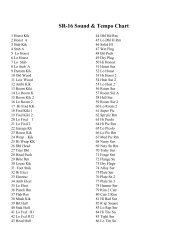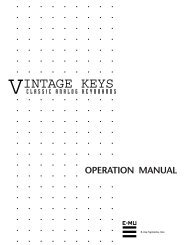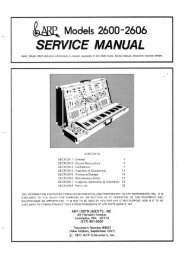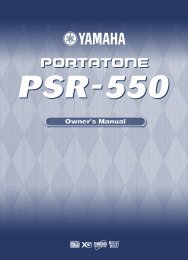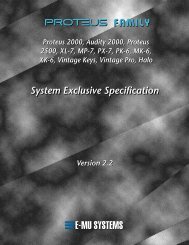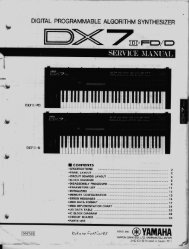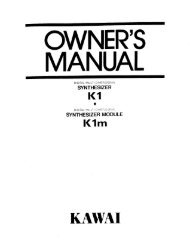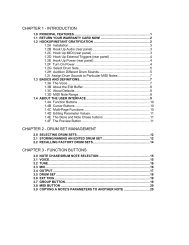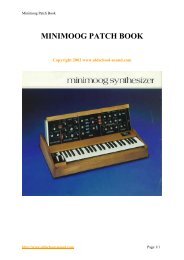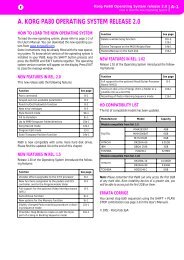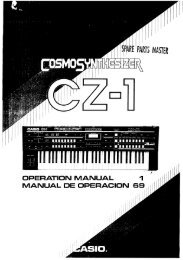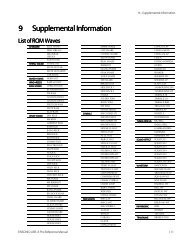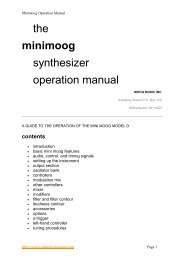Manuale italiano-inglese Oberheim-Viscount MC3000 - Synth Zone
Manuale italiano-inglese Oberheim-Viscount MC3000 - Synth Zone
Manuale italiano-inglese Oberheim-Viscount MC3000 - Synth Zone
Create successful ePaper yourself
Turn your PDF publications into a flip-book with our unique Google optimized e-Paper software.
MC 3000<br />
Operating Manual<br />
5. THE CHAIN OPERATING MODE<br />
5.1 INTRODUCTION<br />
The term Chain refers to a system which simplifies a sequence of patches; in other words,<br />
a chain is simply a ladder which contains an order of succession for the <strong>MC3000</strong> patches.<br />
With this system, each of the MC-3000's 1024 patches can be different from the others in<br />
all its parameters, and it is then up to the chain to recall the desired patches, which may<br />
also be the same, from within its construction elements called STEPS.<br />
5.2 PLAY CHAIN.<br />
The first page of the CHAIN operating mode is the PLAY CHAIN page, which allows us to<br />
select the number of the chain to be used, but does not allow us to modify or set the<br />
chain, because all this is carried out in the next page, called EDIT CHAIN.<br />
As soon as we access this page, we find the CHAIN N. field in the top right-hand of the<br />
display selected automatically; here the encoder, the INC and DEC keys or the Numeric<br />
pad followed by the ENTER key to confirm can be used to select the number of the chain<br />
to be used. The number of the selected chain will appear alongside the number.<br />
Chain Number<br />
Chain Name<br />
Step Mode<br />
Under the chain number, the screen shows the STEP MODE, meaning the way in which<br />
the system is moved on to the next step; this may be set by means of a pedal, a number<br />
key, a key note key, etc. The central window contains the information about the current<br />
step, while the patch assigned to that step appears beside the word PROGRAM. The<br />
cursor keys are disabled since there are no other fields which can be selected. As its<br />
associated icon indicates the first function key F1 gives access to the second page, the<br />
EDIT CHAIN page. The other function keys are used to scroll through the steps in the<br />
direction shown by the corresponding icon. F2 moves forward one step, F3 moves back<br />
one step, while F4 and F5 take us to the first and last steps in the chain respectively. F6,<br />
associated to the NEXT icon, is used to confirm the step selected using the function keys<br />
or to move forward one step, with automatic confirmation of the selected step.<br />
CAUTION: the step scroll functions (keys F2, F3, F4 and F5) are solely "pointing"<br />
functions and do not cause loading of the patch associated to the step.<br />
Once the desired step has been selected, press F6 or the device specified in the STEP<br />
MODE to enable the patch selected for it.<br />
When the chain is recalled, although it is displayed the first step is not yet operational;<br />
press F6 (or one of the devices selected for step mode) to enable the corrisponding patch.<br />
105



